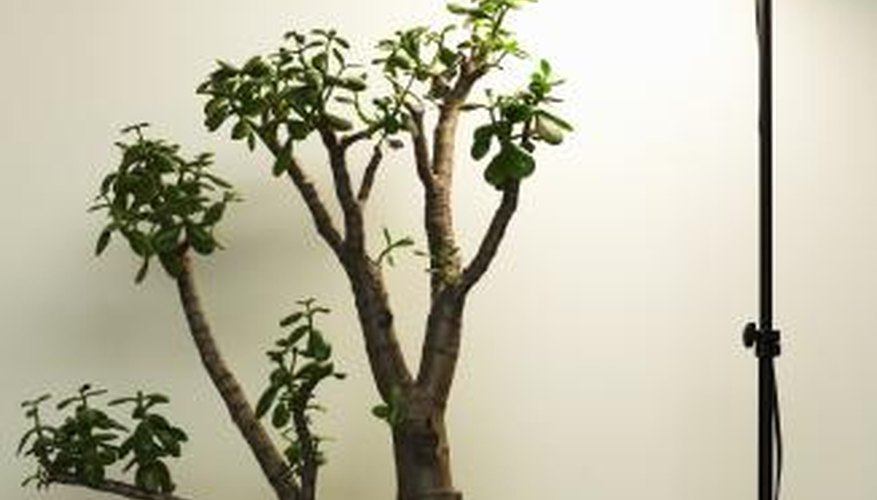The "money plant" is a general term used to refer to three entirely different plants. The plants include the succulent jade plant (Crassula ovata and Crassula members), the honesty plant (Lunaria annua) and the Guiana chestnut tree (Pachira aquatic). While each plant is vastly different, the resistance to disease is quite similar. Each of these healthy plants is resistant to most diseases and responds well to treatment when diseases are caught early.
Powdery Mildew

There is a variety of different fungal variations that create the powdery mildew disease. Each variation infects its own collection of hosts, including annual and perennial flowers, and deciduous and evergreen trees and vegetation. Powdery mildew infects all three variations of the money plant, especially the succulent jade which is the most susceptible of the three. This spore borne infection attacks the foliage of the plant, causing small necrotic spots on the leaves that are covered by a powdery white fungal covering. Powdery mildew infections are most aggressive during the warm, dry periods that are accompanied by high humidity levels. Still, the infection is relatively easy to treat when addressed early in the infection.
- There is a variety of different fungal variations that create the powdery mildew disease.
- This spore borne infection attacks the foliage of the plant, causing small necrotic spots on the leaves that are covered by a powdery white fungal covering.
Root Rot

Improper and irregular watering makes all three money plants susceptible to root rot. Over- and under-watering weakens the root systems of each plant which causes the roots to become susceptible to the natural fungi present in its soil. The jade plant is a highly drought-tolerant succulent that requires slightly dry soils. Over-watering will quickly rot the roots of this plant. Both the honesty plant and Guiana chestnut need continuously moist, but not saturated soils. While these money plants will tolerate an occasional over-watering, frequent overwatering will waterlog the soils and promote root rot infections. To prevent this disease, money plants should be watered only according to its individual needs, rather than on a schedule.
- Improper and irregular watering makes all three money plants susceptible to root rot.
- While these money plants will tolerate an occasional over-watering, frequent overwatering will waterlog the soils and promote root rot infections.
Leaf Spot
All plants and trees, including each money plant, are susceptible to at least one variation of leaf spot disease. Leaf spot diseases can be fungal or bacterial. These spore-borne diseases cause small, necrotic spots on the foliage that enlarge with the disease's progression. The spots are often encircled with reddish or yellowish outlines and the infected leaves often become discoloured. The infection causes the leaves to wilt and severely infected plants often experience dieback, growth stunt and premature defoliation. Leaf spot infections can be controlled by removing the infected leaves and keeping the money plant's area free of debris and defoliation.
- All plants and trees, including each money plant, are susceptible to at least one variation of leaf spot disease.
- Leaf spot infections can be controlled by removing the infected leaves and keeping the money plant's area free of debris and defoliation.
Considerations
Each money tree is a vigorous grower in its healthy state. Vigorous growth is also each plant's best defence against disease. To prevent common infections, it is important to take steps to maintain the appropriate care. In general, proper watering, regular fertilisation and occasion pruning sessions will help to keep these plants growing vigorously and in their best state of health. It is important to also keep each plant's area free of debris and defoliation to reduce the presence of infectious fungal and bacterial diseases.
- Each money tree is a vigorous grower in its healthy state.
- To prevent common infections, it is important to take steps to maintain the appropriate care.
